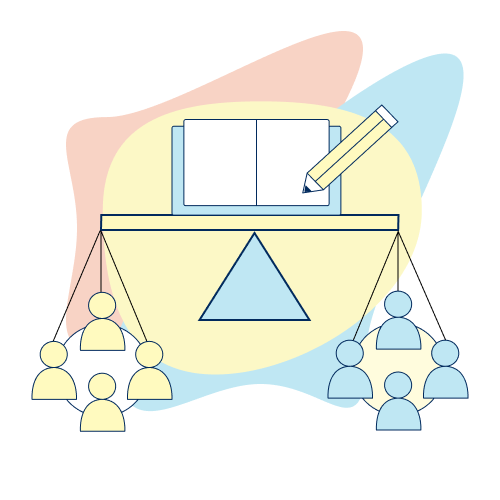
Equity-focused research methods aim to inform us of our participants’ needs, not justify why those needs aren’t met. Ruth shares her experience exploring equitable research methods.
Written by Ruth Rodrigues, Master of Education, Social Justice Education, Qualitative Data Archivist Team Lead
Empowering Through Research

When I joined the Innovation Hub as a Qualitative Data Archivist, I was excited by the opportunity to use equitable approaches to research that I learned about as an undergraduate student. I learned that by using equitable research methods, we as researchers at the Innovation Hub can challenge our biases instead of reinforcing them.
I was in the Critical Equity Studies program completing my bachelor’s degree at the University of Toronto when I learned of the ability of social sciences to replicate social inequality in their attempts to study them. When I took a Community-Engaged Learning course with Dr. Sam Tecle, we explored equitable research methods that focused on treating research participants as equals. This course also highlighted how exploitative methods persist despite continuing improvements in research ethics. This made me skeptical of the field’s ability to address marginalization, the treatment of some groups as inferior to others, since it appeared in so many research settings. Although I now have a more hopeful focus on the power of research to empower marginalized groups, I feel inspired to go even further than empowerment by challenging the root causes of marginalization.
Challenging the Researcher

A major turning point in my search for equitable research methods was in reading the works of Dr. Eve Tuck, one of my professors at OISE. Tuck’s open letter to contemporary researchers, Suspending Damage (2009), stresses the importance of going beyond “damage-centered research” by focusing on the unmet needs and desires of marginalized groups. This mindset challenges researchers to find out what they can do for their participants, before looking for what they can gain for themselves. Having just completed the first year of my master’s, I feel extraordinarily lucky knowing I am directly working with researchers that share my goals.
Balancing Power Dynamics

Working at the Innovation Hub has allowed me to work closely with students by utilizing empathy-based research designs, which account for presence of inequality without reinforcing it. In my research support role, I worked with work-study students on the Health and Wellness team on a project designed to understand the lived experiences of students. In this model, both researchers and participants are stakeholders, because they are members of the same U of T community. Since they share similar stressors, this reduces the risk of alienating participants. The research maintains balance by avoiding unequal power dynamics while still achieving rich data that both parties benefit from.
Addressing Vulnerabilities of Marginalized Groups
A closer look at research in the social sciences reveals that many instances of discrimination and inequality go unchallenged. However, many researchers, including those at the iHub, have begun to account for the influence of marginalization. Instead of centering professional and academic work on marginalization, there must be a push towards centering the needs of marginalized groups.
References
Tuck, E. (2009). Suspending damage: A letter to communities. Harvard educational review, 79(3), 409-428.
0 comments on “How Student Participation Can Combat Social Inequality”